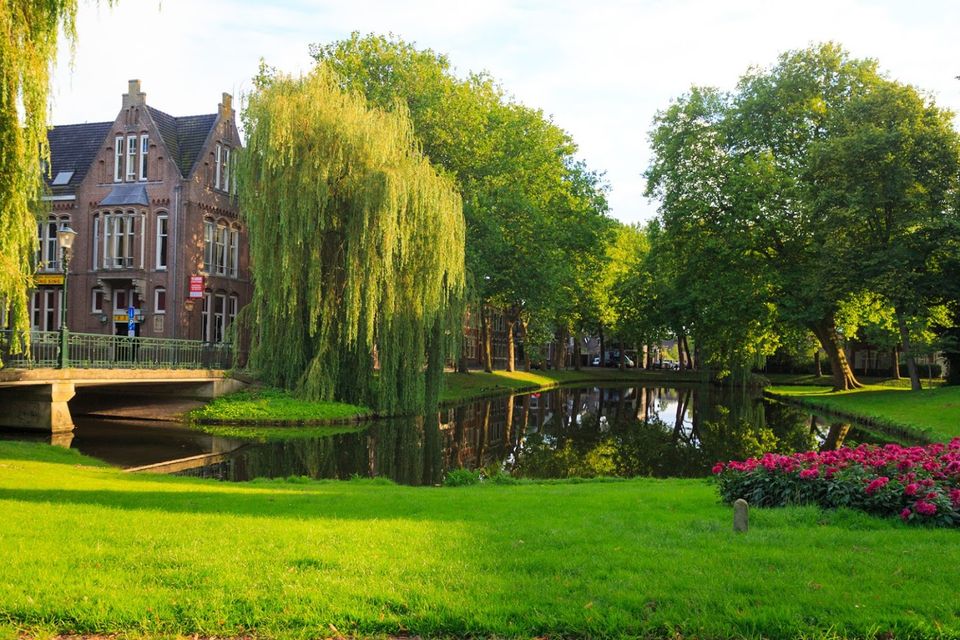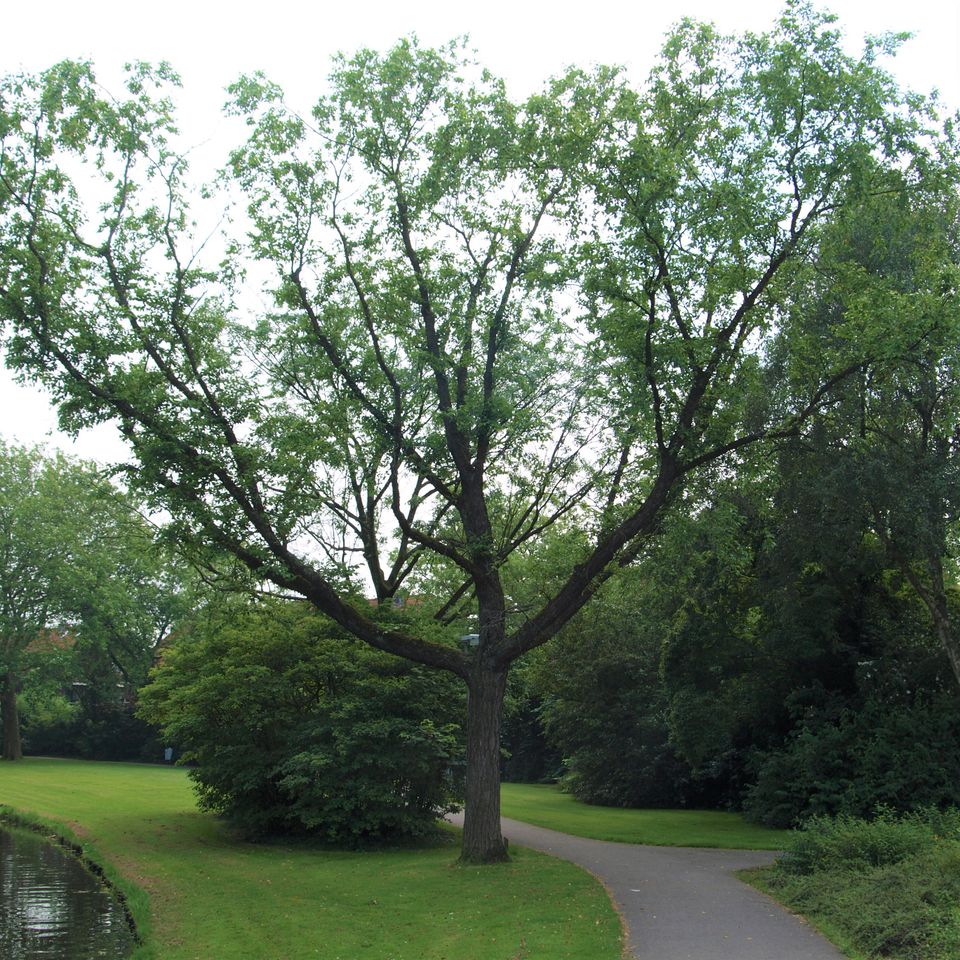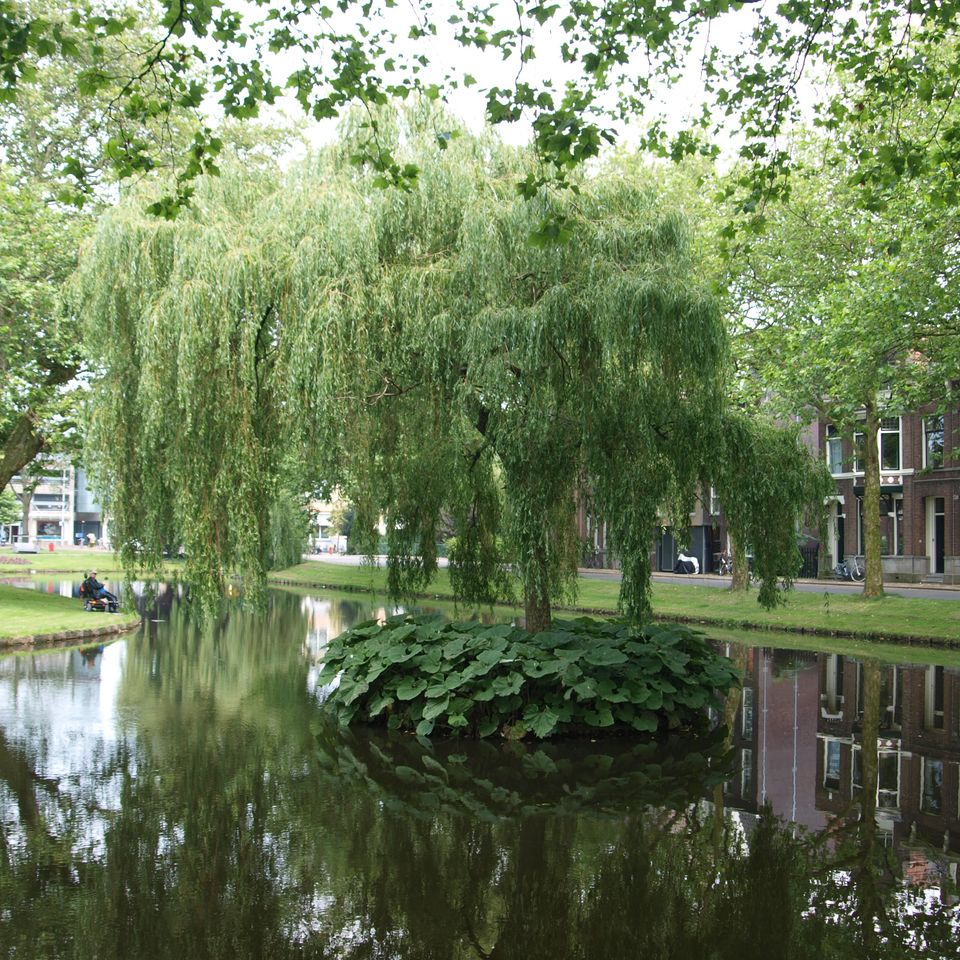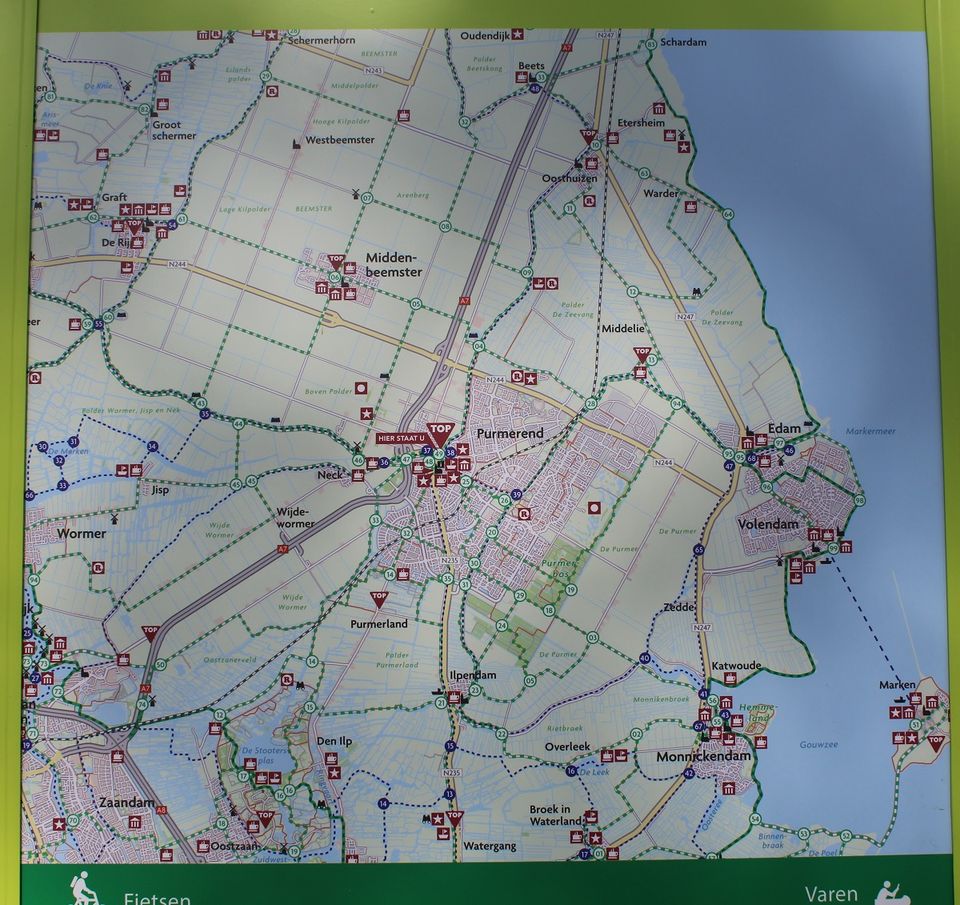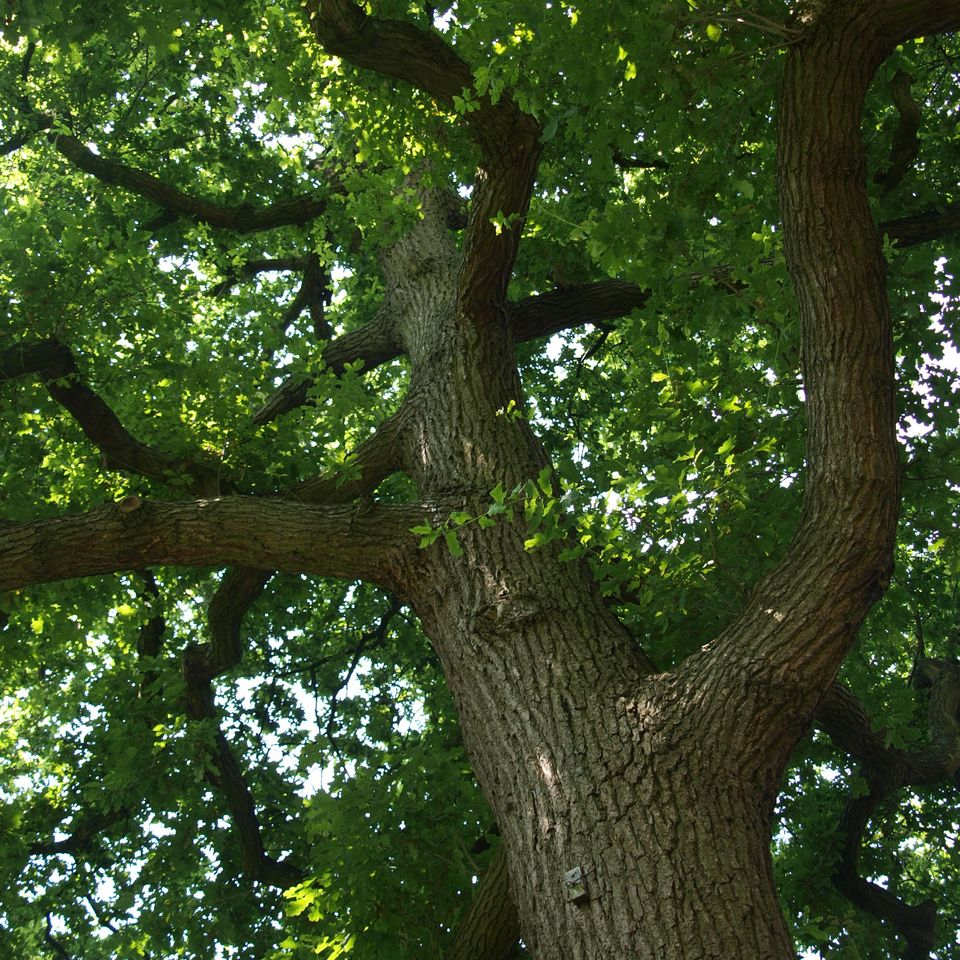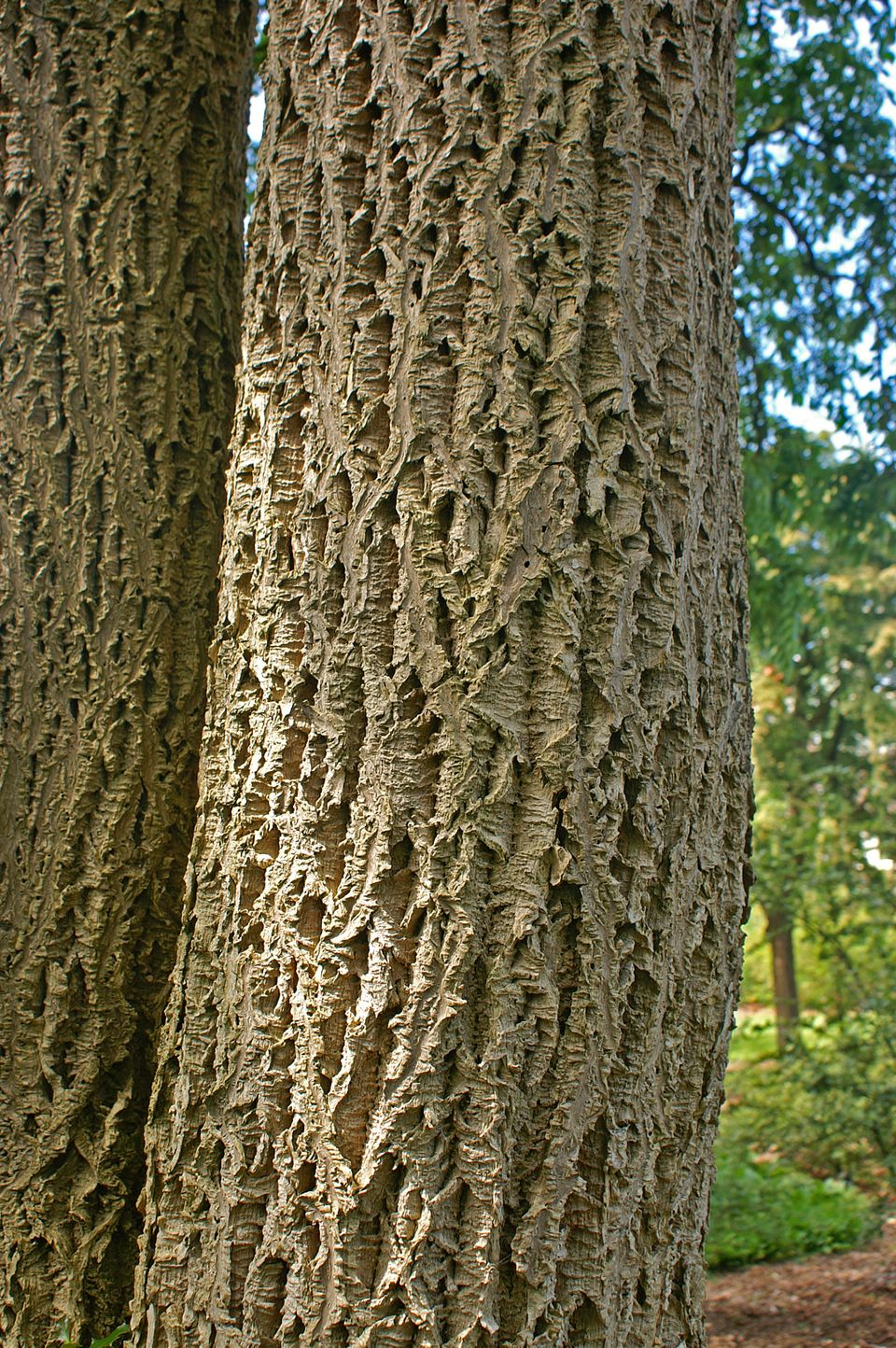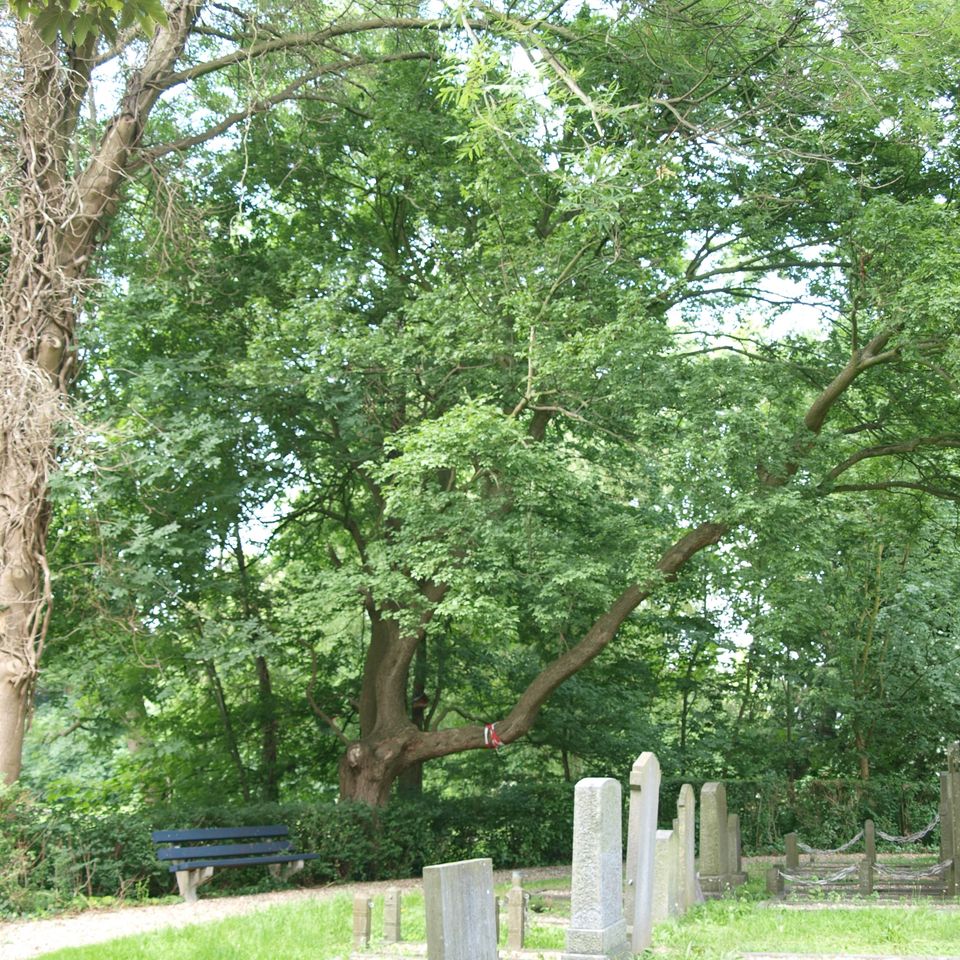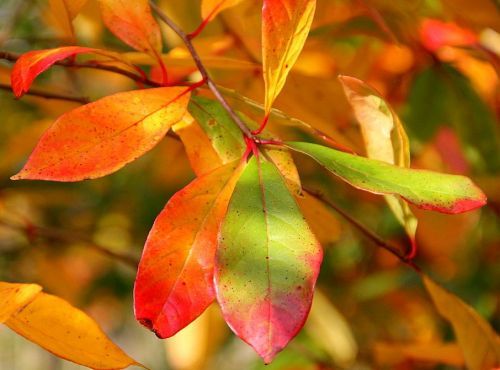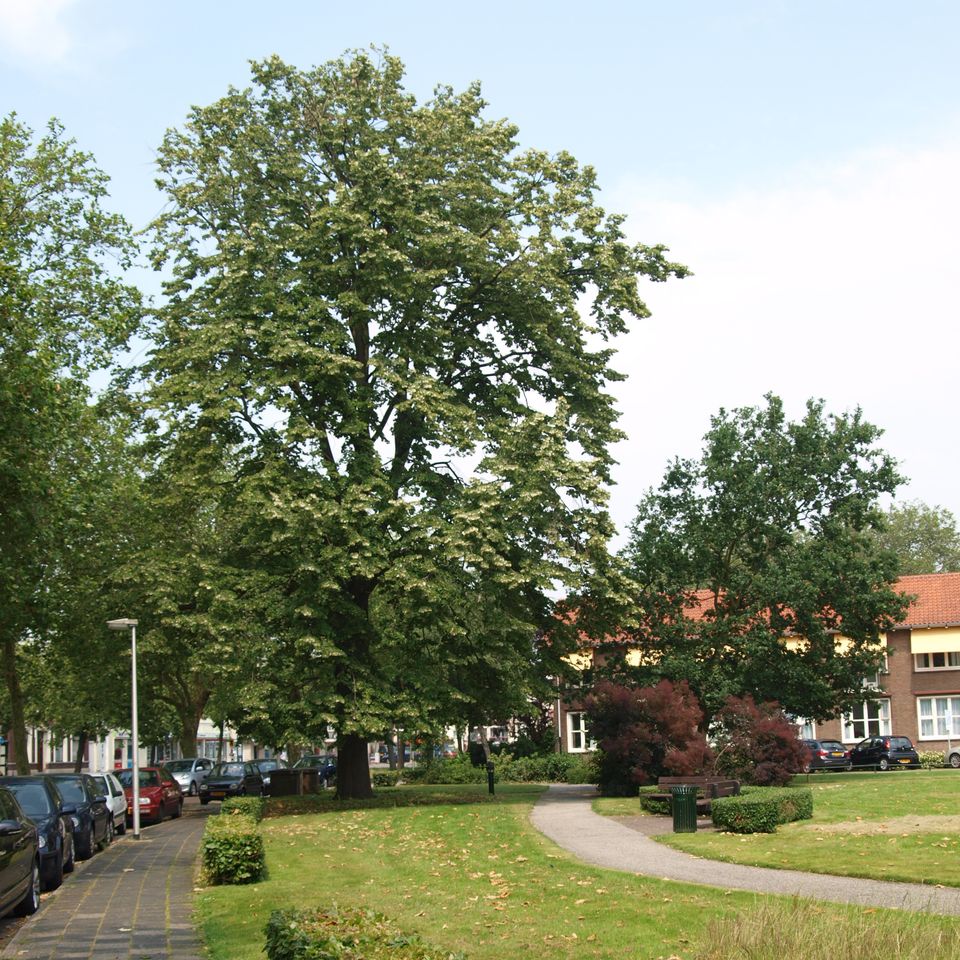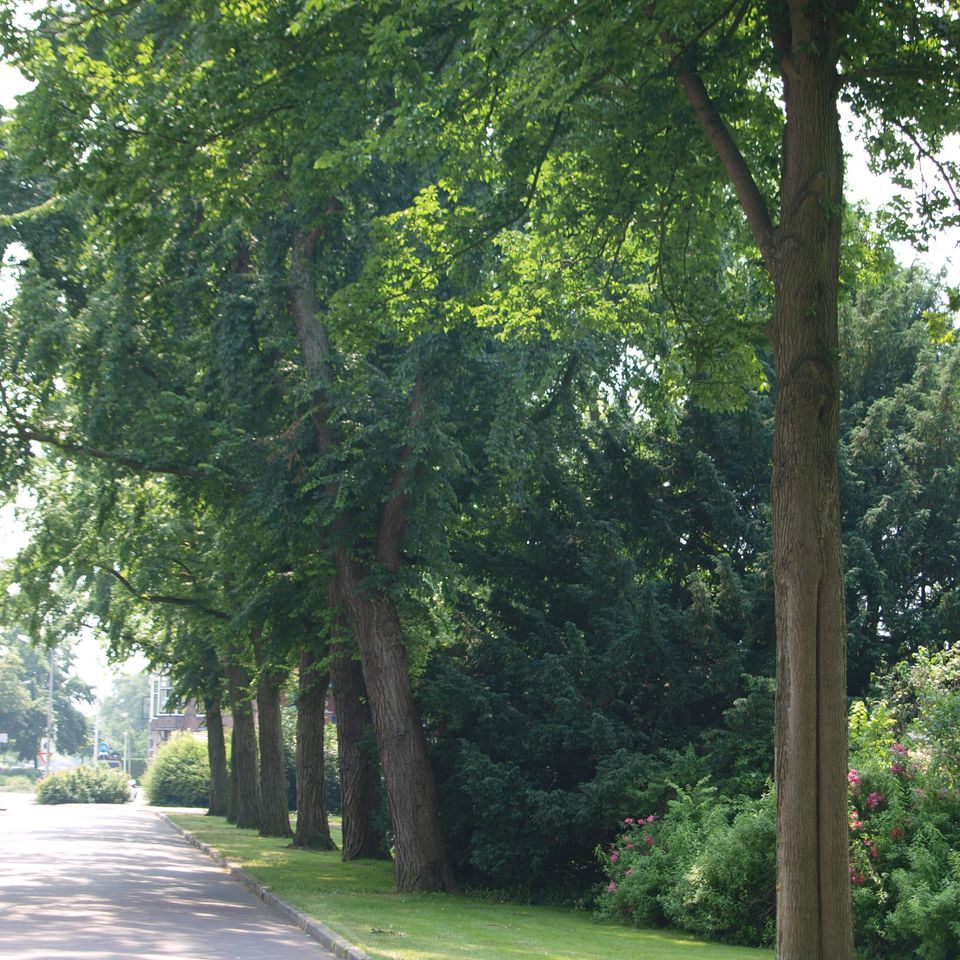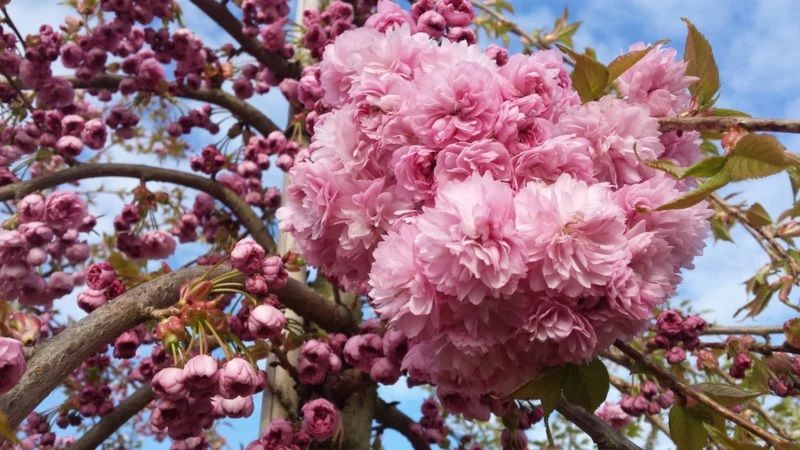Remarkable Tree Walk
This walk takes you along and through the historic city center of Purmerend, it uses beautiful trees and greenery as markers. More than thirty unique and historic trees have been included in this route.
Route
This route can be followed via the signposts along the way. The purple arrows can be found on lampposts, traffic posts or route posts and show you the way along the route. Along the way, most trees will have a sign stating its name. You can start this route at Purmerend train station or at the TOP (Tourist Transfer Point) on the Beemsterburgwal.
Useful information
The free brochure with routemap is available at the VVV/Museum Shop or can be downloaded as a PDF document.
Dit ga je zien
Startpunt
Treinstation Purmerend
Stationsweg 1
1441 EJ Purmerend
Navigeer naar startpunt
Double-flowered Horse Chestnuts | Aesculus hippocastanum 'Baumannii'
In front of the station, a double-flowered horse chestnut is displayed in the circular garden. Striking are the 'white candles' that adorn the tree in May and June.
Double-flowered Horse Chestnuts | Aesculus hippocastanum 'Baumannii'
In front of the station, a double-flowered horse chestnut is displayed in the circular garden. Striking are the 'white candles' that adorn the tree in May and June.
The horse chestnut originates from Southwest Asia and Southeastern Europe and is widely planted in the Netherlands. The tree likes slightly acidic, nutrient-rich soil and a sunny position. The horse chestnut can grow up to 25 meters high. The lower branches sag at a later age and then grow straight upwards. This gives the tree a 'heavy crown'. The fact that the tree looks rather dark is due to the dark green leaves, which are palmate: narrow at the base and broad at the top.
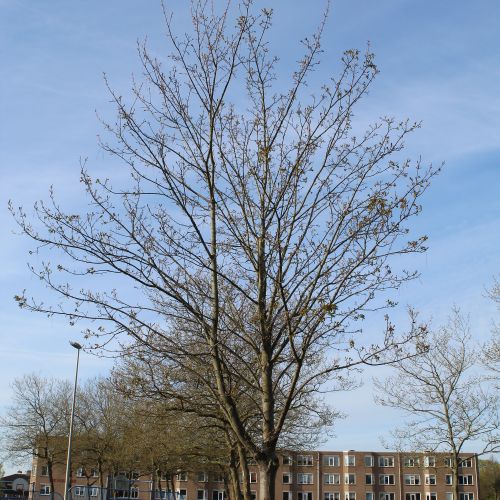
Ash | Fraxinus excelsior
On the Wilhelminalaan you pass right by one of the largest ash trees in Purmerend. This is no less than 17 metres tall and it has lots of 'water shoots', which are a sign of age.
Ash | Fraxinus excelsior
On the Wilhelminalaan you pass right by one of the largest ash trees in Purmerend. This is no less than 17 metres tall and it has lots of 'water shoots', which are a sign of age.
The ash occurs naturally and in different species in much of Europe. However, the fraxinus excelsior is the only species that can also be found in the Netherlands. Together with the privet and the lilac, the ash belongs to the olive family. The tree likes to grow in moist and nutrient-rich soil. Furthermore, he makes few demands. Ashes do not leaf out until late spring and drop their leaves again early in the autumn.
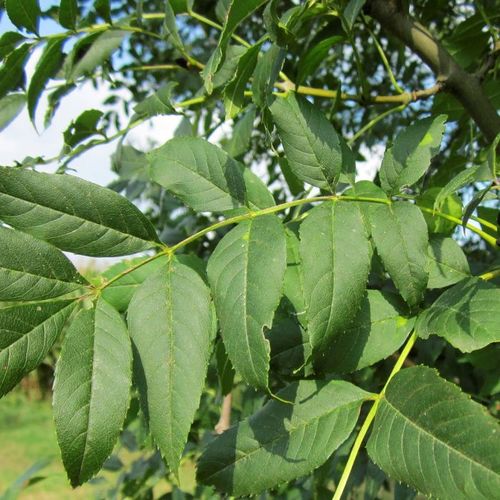
Beech | Fagus sylvatica
To the right of the former school building is a massive beech with a trunk circumference of no less than 3.5 metres.
Beech | Fagus sylvatica
To the right of the former school building is a massive beech with a trunk circumference of no less than 3.5 metres.
Beeches are native to the Netherlands and belong to the so-called cupola family: the fruit is protected by a cupule. Beeches don't want to grow everywhere. The tree occurs in the final stage of forest development. The soil must be moist and well-drained. The groundwater level should not be too high, but not too dry either. The beech lives in symbiosis with a fungus. This means that without the fungus the tree has difficulty growing. Beeches can become large trees, in forests 35 meters is no exception! Due to the sour leaves and the dense crown, little will grow under a beech. Beech forests are therefore very open.
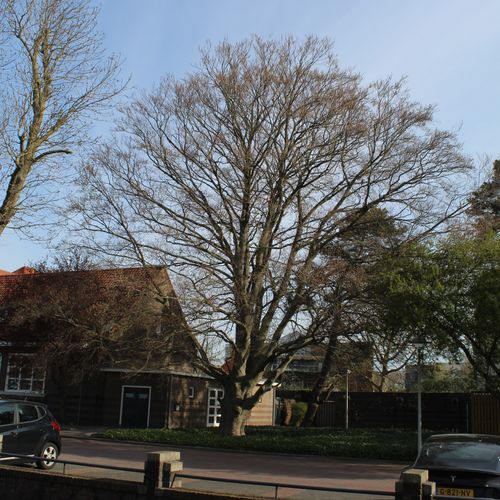
Wingnut | Pterocarya fraxinifolia
There is a monumental wingnut left of the building. The tree is originally from the Caucasus area.
Wingnut | Pterocarya fraxinifolia
There is a monumental wingnut left of the building. The tree is originally from the Caucasus area.
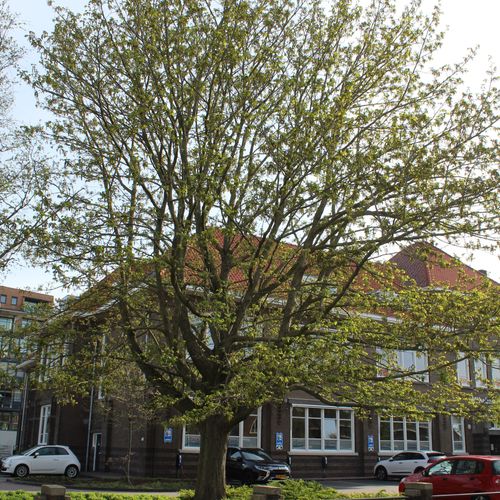
Plane | Platanus x hispanica
There is a beautiful plane tree at the beginning of the park. Plane trees are capable of withstanding the urban climate and can easily reach a height of 25 to 35 metres.
Plane | Platanus x hispanica
There is a beautiful plane tree at the beginning of the park. Plane trees are capable of withstanding the urban climate and can easily reach a height of 25 to 35 metres.
Plane trees grow almost everywhere! And they are resistant to dust and air pollution. The plane tree also does not mind if its branches are pruned considerably. It is therefore a fine tree for streets and parks. If you let them grow freely, they become really impressive trees. You will encounter them in more places on this tree walk.
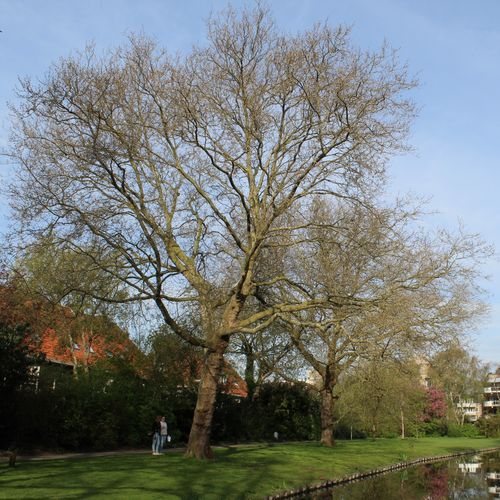
Oak-leaved Beech | Fagus sylvatica 'Quercifolia'
Don't be fooled! This is not an oak, it’s a beech with leaves that closely resemble those of an oak tree. Hence the name.
Oak-leaved Beech | Fagus sylvatica 'Quercifolia'
Don't be fooled! This is not an oak, it’s a beech with leaves that closely resemble those of an oak tree. Hence the name.
Beech trees are native to the Netherlands. But the leaf of this species looks more like the leaf of an oak. The oak-leaved beech is also only found in Europe. It is not known exactly when this species was selected. Beeches belong to the so-called cupola family: the fruit is protected by a cupule. Beeches don't want to grow everywhere. The tree occurs in the final stage of forest development. The soil must be moist and well-drained. The groundwater level should not be too high, but not too dry either. The beech lives in symbiosis with a fungus. This means that without this fungus it is difficult for the tree to grow. This tree can grow up to 20 meters. The crown eventually becomes round. Due to the sour leaves and the dense crown, little will grow under a beech. Beech forests are therefore very open.
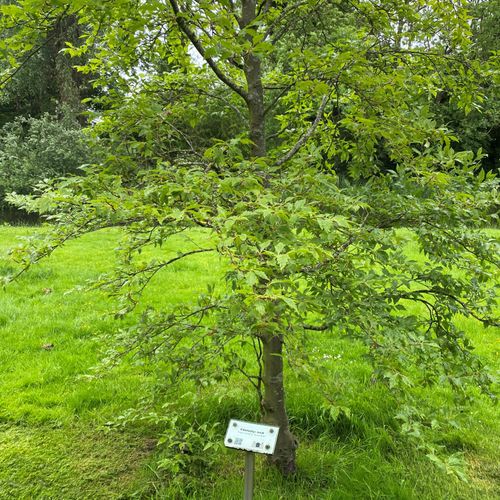
Black Birch | Betula nigra
This really is a birch, but it doesn’t have a white bark.
Black Birch | Betula nigra
This really is a birch, but it doesn’t have a white bark.
Birches can grow into large trees. This is about 15 meters, but in the wild and in forests a height of up to 25 meters is quite achievable. The black birch likes to grow in moist soil. He just really doesn't like clay or acidic soil. Due to its growth habit, the birch is not really suitable for a narrow street. It comes into its own in a park.

Dutch Lime | Tilia europaea
The Dutch lime is the result of an ancient cross between the Small-leaved Lime and the Summer Lime. There’s an impressive row of them in front of you here.
Dutch Lime | Tilia europaea
The Dutch lime is the result of an ancient cross between the Small-leaved Lime and the Summer Lime. There’s an impressive row of them in front of you here.
Because the small-leaved linden and the summer linden both occur in the wild in the Netherlands, this Dutch lime can spontaneously emerge in the forest. However, the crossing that you see beautifully lined up here originated in a nursery. You see the tree a lot at farms, because it gives a lot of shade. Do you also know the lime tree? So that is a Dutch linden that is pruned annually in a plane. It is also an easy tree: it grows almost everywhere. As it ages, the trunk gets considerable grooves and thicker knobs on which young twigs often grow.
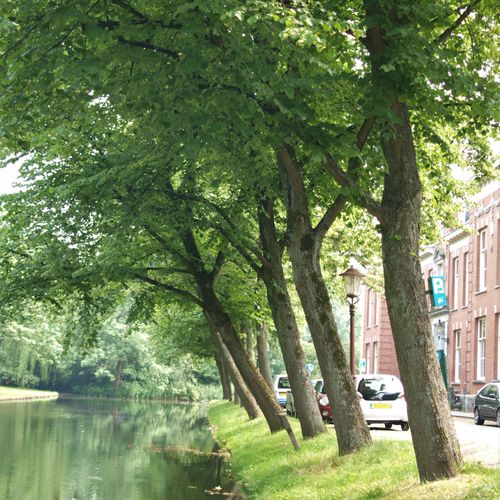
Weeping Willow | Salix sepulcralis 'Chrysocoma'
Who doesn't recognise the weeping willow? This weeping willow has its own island in the water. How cool is that!
Weeping Willow | Salix sepulcralis 'Chrysocoma'
Who doesn't recognise the weeping willow? This weeping willow has its own island in the water. How cool is that!
This characteristic tree is often found in parks and cemeteries. If the soil is moist and rich in nutrients, the weeping willow can reach a height of 20 to 25 metres. The width is often not inferior to that. In winter, the thin yellow twigs that hang vertically down stand out. Did you know that the name of this willow has changed many times? This weeping willow is a cross between the native willow salix alba and the Chinese weeping willow. This species was first crossed in France in 1815 and was then called salix alba 'tristis'. After that he was suddenly called salix babylonica. And now salix sepulcralis 'chrysocoma'. Shall we just keep it weeping willow?

Juliana Lime | Tilia europaea
There is a long row of these lime trees along the Emmakade. The lime tree on the corner of Julianaplein has a special name. It's a Juliana Linde.
Juliana Lime | Tilia europaea
There is a long row of these lime trees along the Emmakade. The lime tree on the corner of Julianaplein has a special name. It's a Juliana Linde.
Planting a tree is an old custom at the birth or coronation of a crown prince (ess) from the royal house. This Dutch linden was planted for Juliana, but whether that happened at her birth in 1909 or at her coronation in 1948 is unknown to anyone. It may well be that the tree was planted at birth, dug up in World War II and then planted again. But believe it or not, you can't find that anywhere! The Dutch lime tree is a cross between a small-leaved lime tree and a summer lime tree. Because both occur in the wild in the Netherlands, a Dutch lime tree can spontaneously emerge in the forest. However, this crossing originated in a nursery. You see the tree a lot at farms, because it gives a lot of shade. Do you also know the lime tree? So that is a Dutch linden that is pruned annually in a plane. It is also an easy tree, which actually grows everywhere. As it ages, the trunk gets considerable grooves and thicker knobs on which young twigs often grow.

TOP Purmerend
TOP's, afgekort voor Toeristische Overstappunten, bieden een handige start voor jouw verkenning van de landelijke omgeving. Elke TOP voorziet in parkeergelegenheid, waarna je op de fiets, te voet of zelfs per boot de omgeving kunt verkennen
TOP Purmerend
TOP's, afgekort voor Toeristische Overstappunten, bieden een handige start voor jouw verkenning van de landelijke omgeving. Elke TOP voorziet in parkeergelegenheid, waarna je op de fiets, te voet of zelfs per boot de omgeving kunt verkennen
Op de informatiezuilen van elke TOP vind je verschillende routes die je naar de mooiste plekjes, de rustige omgeving en de prachtige natuur van Laag Holland leiden. Tijdens je tocht kom je langs verrassende rustpunten en gezellige horecagelegenheden, en de TOP’s wijzen je de weg om ze te vinden. Je herkent de TOP´s aan hun groene informatiezuilen.
Purmerend, het hart van Laag Holland, is de ideale uitvalsbasis voor het verkennen van de regio via wandelingen, fietstochten of vaarroutes. De stad zelf is ook de moeite waard, met zijn historische marktrechten die teruggaan tot 1484 en een bloeiende handelsgeest. De stad biedt tal van bijzondere winkels om te winkelen en een scala aan restaurants en cafés om te genieten van verfrissende drankjes en heerlijke (streek)producten!
Goed om te weten
- In de meeste delen van Purmerend geldt betaald parkeren. Raadpleeg de website van de gemeente voor de actuele tarieven en parkeermogelijkheden.
- Wil je een fiets huren? Dit kan bij Rijwielhandel Purmerend!

Single-leaf Ash | Fraxinus excelsior (Monophylla)
This group of ash trees is quite unusual. The name says it: they are single-leaved and were once called 'Monophylla’, literally, one-leaf.
Single-leaf Ash | Fraxinus excelsior (Monophylla)
This group of ash trees is quite unusual. The name says it: they are single-leaved and were once called 'Monophylla’, literally, one-leaf.
The ash occurs naturally and in different species in much of Europe. However, the fraxinus excelsior is the only species that can also be found in the Netherlands. Together with the privet and the lilac, the ash belongs to the olive family. The tree likes to grow in moist and nutrient-rich soil. Furthermore, he makes few demands. Ashes do not leaf out until late spring and drop their leaves again early in the autumn. This species is special: the tree has one leaf with two smaller leaves. An anomaly discovered in England in 1789. In the young years the tree is almost columnar. Later, the tree develops a broad, upright crown that can reach a height of 15 to 18 metres. The width is about 10 meters. Striking are the dark brown, almost black buds that are clearly visible in winter.

Pedunculate Oak | Quercus robur
The Pedunculate Oak is a native tree in the Netherlands. Oaks belong to the Fagaceae family. Beech and birch trees belong to the same family.
Pedunculate Oak | Quercus robur
The Pedunculate Oak is a native tree in the Netherlands. Oaks belong to the Fagaceae family. Beech and birch trees belong to the same family.
In cupola carriers, the fruit of the tree is protected by a… cupule. In the case of the oak, this is the characteristic cap on top of the acorn. Did you know that pigs love acorns? In the past they were released in the woods to enjoy the acorns. And did you know that our ancestors saw oaks as sacred trees? Oaks are common in the Netherlands and in large parts of Europe and Russia. Pedunculate oaks are easy trees, they grow on almost all soil types. They can grow up to 40 meters high and quite wide. Not a tree for a city garden! The wood of the oak is durable and is widely used in the furniture industry and shipbuilding. The bark contains eek. This is again very important as a tanning agent for the leather industry.

Mountain Maple | Acer pseudoplantanus 'Atropurpurea'
It is not entirely certain that the common maple is native to the Netherlands. Some say so, others believe that the tree has only been known in the Netherlands since the late Middle Ages.
Mountain Maple | Acer pseudoplantanus 'Atropurpurea'
It is not entirely certain that the common maple is native to the Netherlands. Some say so, others believe that the tree has only been known in the Netherlands since the late Middle Ages.
This red-leaved specimen is native to Central and Southern Europe and Southwest Asia. The red leaf is a color deviation from the common maple: red-leaved plants are regularly found in seedlings. Some of them have been given official names, such as this one. The color of the leaf can vary from wine red to dark purple. In this tree, the underside of the leaf is purple-red in color. A maple will grow anywhere, it does not make many demands. He also doesn't mind a windy place. The tree has a beautiful palmate leaf. And everyone knows the fruits, they look like little helicopters! The wood of the maple is very valuable and is widely used for parquet, musical instruments and gymnastic equipment.
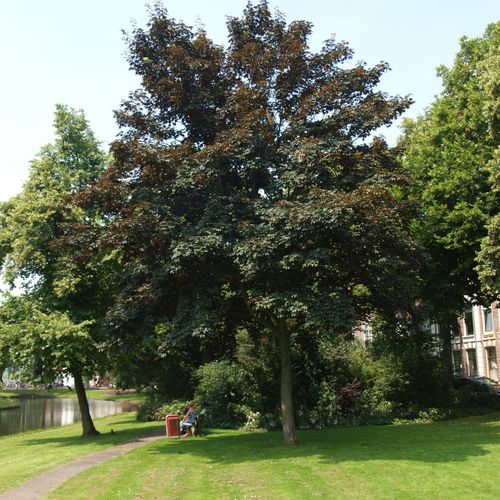
Irish Yew | Taxus baccata 'Fastigiata Aureomarginata'
Is it a tree or a shrub? This special Yew has an upright shape (Fastigiata) and the young leaves have a yellow edge (Aureomarginata). Truly a special feature, of which we do not know when it was discovered.
Irish Yew | Taxus baccata 'Fastigiata Aureomarginata'
Is it a tree or a shrub? This special Yew has an upright shape (Fastigiata) and the young leaves have a yellow edge (Aureomarginata). Truly a special feature, of which we do not know when it was discovered.
Yews are actually conifers. The Irish yew is widespread in Europe and is very rare, also in the Netherlands. This conifer is found in deciduous forests, hedges, along streams and likes a moist, well-ventilated, moderately nutrient-rich, humus-rich soil. The ancient Greeks thought that the plant had something to do with the gods from the underworld, as they were often found in cemeteries. And the plant is very poisonous! Only the red flesh of the berries is not. Still, the young shoots are used in an anti-cancer drug. The plant is always green and can get very old. The shrub or tree can reach a height of 3 to 15 meters. Very often there is already a branch from the bottom.
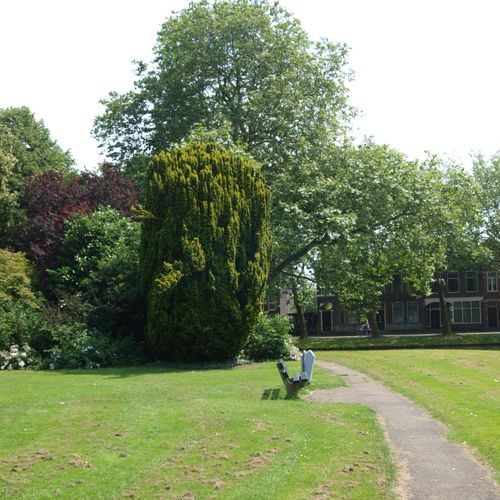
Hungarian Oak | Quercus frainetto
Unfortunately, the Hungarian oak that was planted here in honour of the 50,000th inhabitant of Purmerend, did not survive a major renovation of the square. But this younger specimen is just as beautiful.
Hungarian Oak | Quercus frainetto
Unfortunately, the Hungarian oak that was planted here in honour of the 50,000th inhabitant of Purmerend, did not survive a major renovation of the square. But this younger specimen is just as beautiful.
This tree comes from the Balkans, you will find it mainly in Serbia, Bulgaria and Romania. The strange thing is that the tree hardly occurs in Hungary. It belongs to the cup bearer family, just like beech and birch.
This oak likes heavy, nutritious, slightly acidic soils that are wet in spring and bone dry in summer. It does not like a high water table and dislikes lime. The lime is the reason that the tree does not actually occur in Hungary.
This deciduous tree can grow up to 30 meters or more. Usually there is a nice continuous trunk. It is striking that the leaves are at the ends of the branches. This gives the tree an open crown.
The leaves are large and glossy green and turn from yellow to brown in autumn. They sometimes remain on the tree until spring. The acorns are enclosed by the cupule for a third to half.
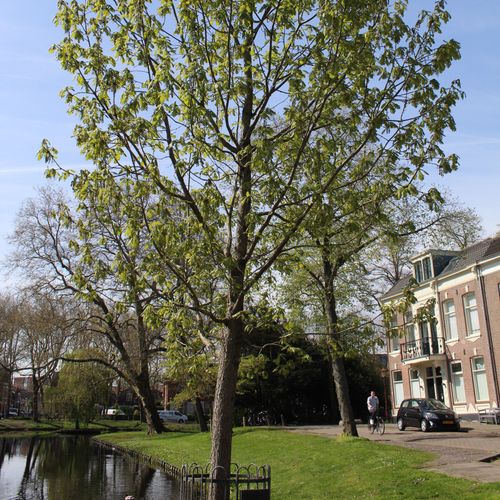
Chinese Varnish tree | Koelreuteria paniculata
In the autumn, the yellow flowers of this tree are followed by typical 'swollen' fruits that look a lot like lanterns.
Chinese Varnish tree | Koelreuteria paniculata
In the autumn, the yellow flowers of this tree are followed by typical 'swollen' fruits that look a lot like lanterns.
This tree has many names: Chinese varnish tree, yellow soap tree, lantern tree, cooling window tree and blowing tree! It belongs to the soap tree family: a worldwide family of woody plants. You see the Chinese varnish tree mainly in parks and along streets. The tree is native to Asia, China and Korea. Did you know you can roast the seeds and then eat them?
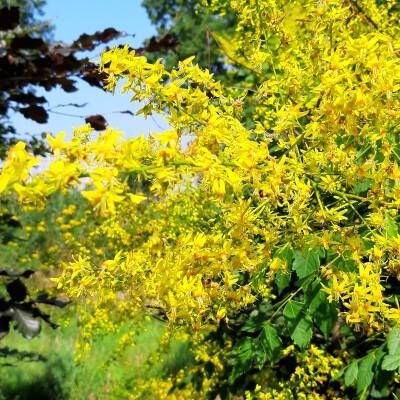
Amur Cork tree | Phellodendron amurense
The older this tree gets, the more cork-like the bark becomes. Amur refers to the catchment area of the Amur River in Asia where it was discovered.
Amur Cork tree | Phellodendron amurense
The older this tree gets, the more cork-like the bark becomes. Amur refers to the catchment area of the Amur River in Asia where it was discovered.
The Amur cork tree is a stately and fast-growing tree that is special in all seasons. In the spring it has yellow flowers, in the summer strongly scented leaves, in the autumn the leaves turn a beautiful yellow and bear berries. And in winter you can see the beautiful profile and the corky bark extra well. Also special: this tree is often wider than it is high. The hard wood is used for furniture and the yellow inside of the bark is used to make yellow dye.

Bee trees | Tetradium daniellii
In a few years, these two young bee trees will form a beautiful green archway. They bloom late, in July and August, and have beautiful plumes with white flowers. The plumes provide a lot of nectar, which bees like to feast on. Hence the name!
Bee trees | Tetradium daniellii
In a few years, these two young bee trees will form a beautiful green archway. They bloom late, in July and August, and have beautiful plumes with white flowers. The plumes provide a lot of nectar, which bees like to feast on. Hence the name!
These trees are located in the old cemetery. It is open to the public on weekdays from 9:00 AM to 3:30 PM.
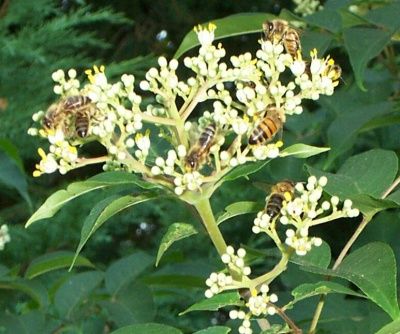
Field Maple | Acer campestre
This native species occurs in large parts of western and central Europe. A moderately nutrient-rich and moderately moist soil is preferred. A sunny spot is much appreciated. The Field Maple is related to the Common Maple trees.
Field Maple | Acer campestre
This native species occurs in large parts of western and central Europe. A moderately nutrient-rich and moderately moist soil is preferred. A sunny spot is much appreciated. The Field Maple is related to the Common Maple trees.
This maple is a pioneer. If there is a hole somewhere in the forest, he will quickly fill it. The tree is rather a large shrub that can grow between 3 and 10 meters high. This maple feels especially 'happy' along a forest edge, as a hedge between two plots or at the edge of a stream. Striking are the small hand-shaped leaves that turn a beautiful yellow in autumn. You often see this species as a deciduous hedge around larger gardens.
This tree is located in the old cemetery. It is open to the public on weekdays from 9:00 AM to 3:30 PM.

Holly | Ilex aquifolium
This holly is over 100 years old and has three trunks. In winter it is full of red berries.
Holly | Ilex aquifolium
This holly is over 100 years old and has three trunks. In winter it is full of red berries.
The holly occurs in the Netherlands as a native tree or as a shrub. It is the only evergreen deciduous tree in the Netherlands: unique! This tree grows slowly and becomes about 8 to 10 meters high. It is also not demanding: dry soil, moist soil, nutrient-rich or nutrient-poor soil, lots of shade. He likes it all. Typical are the leaves. The leaves have spines up to a few meters above the ground. Above that no more. It is said that it protects itself against eating animals. But is that true? Parts of the plant are poisonous…. And of course the holly immediately makes you think of Christmas. The twigs with the typical red berries can be found in almost every Christmas piece. Why? Because birds don't like the berries and they still hang on the branches in December.
This tree is located in the old cemetery. It is open to the public on weekdays from 9:00 AM to 3:30 PM.
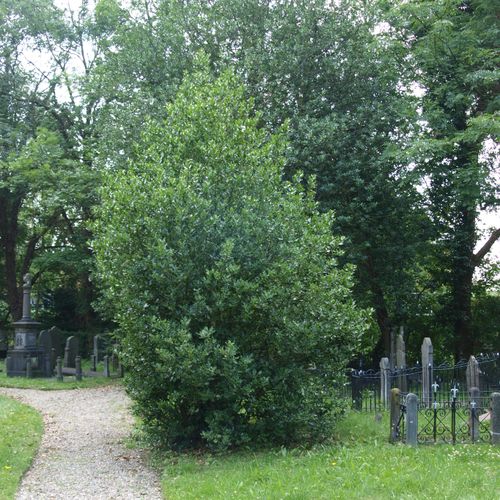
Black Tupelo tree | Nyssa sylvatica | Autumn cascades
This tree is standing where it needs to, in somewhat soggy soil. It is a real eye-catcher, especially in the autumn, with its brightly coloured leaves.
Black Tupelo tree | Nyssa sylvatica | Autumn cascades
This tree is standing where it needs to, in somewhat soggy soil. It is a real eye-catcher, especially in the autumn, with its brightly coloured leaves.

Hanging Silver Lime | Tilia petiolaris or tilia tomentosa pendula
How beautiful can a tree be. This Lime has been able to grow freely for years to the size it is now. Originally there were two, but one has died from a fungus.
Hanging Silver Lime | Tilia petiolaris or tilia tomentosa pendula
How beautiful can a tree be. This Lime has been able to grow freely for years to the size it is now. Originally there were two, but one has died from a fungus.
This hanging silver lime tree is a cross between a tilia tomentosa and an unknown lime species. The pendulous silver lime comes from Southeast Europe and Western Asia and is not native to the Netherlands. For reasons that are unclear, this beautiful park tree is rarely cultivated. The hanging branches are probably a problem. The tree must be crowned high to be able to drive under it. At 10 meters the tree remains relatively narrow, but it can grow high: 25 meters or even higher. The flowering of this tree is the last of all linden trees: sometime in June, July or August. Its nectar or pollen is said to be poisonous to bees. Special is the white-gray underside of the leaf.

Ash-leaved Maple | Acer negundo 'Aureomarginata'
This very broad tree with heavy trunks is really old. The tree comes from the northern United States. It belongs to the maple family. It is one of the compound-leafed maples.
Ash-leaved Maple | Acer negundo 'Aureomarginata'
This very broad tree with heavy trunks is really old. The tree comes from the northern United States. It belongs to the maple family. It is one of the compound-leafed maples.
Most maples have palmate leaves. The unusual leaf shape with 3 to 5 leaves makes this tree quite special. This feather maple also has a color deviation in the leaf. If you look closely, you can see that the leaf margin is creamy white!

Christine Buisman Elm | Ulmus x hollandica 'Christine Buisman'
These seven very rare elms are named after Christine Buisman, who has conducted pioneering research into elm disease. There are three varieties. Can you see the difference?
Christine Buisman Elm | Ulmus x hollandica 'Christine Buisman'
These seven very rare elms are named after Christine Buisman, who has conducted pioneering research into elm disease. There are three varieties. Can you see the difference?
These elms, named after the scientist Christine Buisman, are field elms. A kind of elm that is older than the Dutch elm. At the beginning of the last century, Christine Buisman and Bea Schwartz developed the first cultivated varieties that were more resistant to Dutch elm disease. Elms do like some moisture and nutrition. They grow well in light shade. This cultivated variety cannot withstand the salty sea breeze. You will therefore not find them on the coast. The field elm remains smaller than the Dutch elms. This row of trees was probably planted in the 1950s. This proves that they are highly resistant to Dutch elm disease.

Robinia | Robinia pseudoacacia
The Robinia can be found right behind the, aptly named, Robiniastate and flowers from May right through to July.
Robinia | Robinia pseudoacacia
The Robinia can be found right behind the, aptly named, Robiniastate and flowers from May right through to July.
The robinia is a tree of the legume family. At the end of spring and the beginning of summer, it stands out for its hanging racemes with white butterfly flowers. The tree is often called acacia, which is actually a misnomer, but can be found in the scientific name 'pseudoacacia'. Pseudoacacia means similar to the acacia. Do you also notice the trunk with its strong and deeply grooved bark and striking vertical wide ribs?
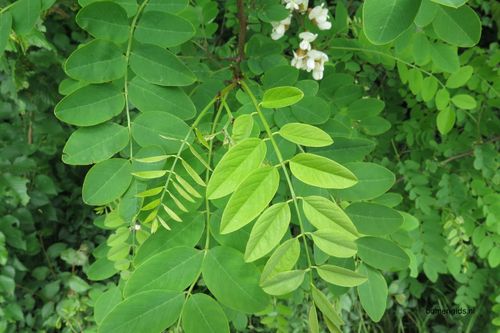
Japanese Nut tree | Ginkgo biloba
In line with the bridge are two groups of Japanese walnut trees: Ginkgo. These trees already existed in prehistoric times and even survived the dinosaurs!
Japanese Nut tree | Ginkgo biloba
In line with the bridge are two groups of Japanese walnut trees: Ginkgo. These trees already existed in prehistoric times and even survived the dinosaurs!
The name of this tree is very misleading. He is not from Japan, but from China! And he also does not produce nuts, but seeds. In Japan, the tree is worshiped as a god. The Japanese walnut tree symbolizes immutability, hope, love, magic, timelessness and longevity. Many artists are inspired by the Japanese walnut tree. It was Goethe's favorite tree. He has grown and planted several hundred of them himself. He also wrote a sonnet about it in 1815: Gingo biloba.
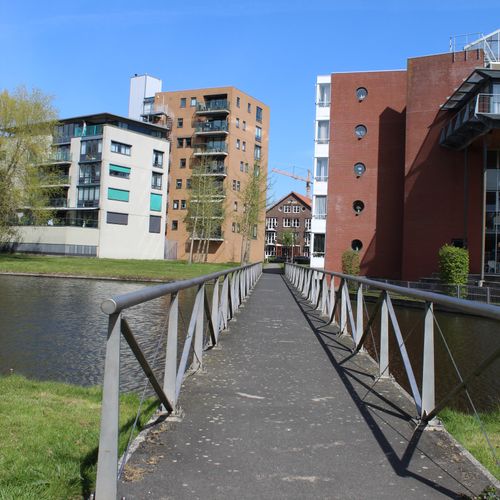
Brown Beech | Fagus sylvatica 'Atropunicea'
Beech trees are native to the Netherlands and the red beech occasionally occurs in nursery seedlings. This cultivar was selected around 1770. The tree has been found somewhere in Central Europe.
Brown Beech | Fagus sylvatica 'Atropunicea'
Beech trees are native to the Netherlands and the red beech occasionally occurs in nursery seedlings. This cultivar was selected around 1770. The tree has been found somewhere in Central Europe.
There are several types of beech, but this brown beech is only found in Europe. Beeches belong to the so-called cupola family: the fruit is protected by a cupule. Beeches don't want to grow everywhere. The tree occurs in the final stage of forest development. The soil must be moist and well-drained. The groundwater level should not be too high, but not too dry either. The beech lives in symbiosis with a fungus. This means that without the fungus it is difficult for the tree to grow. But when they grow they can become big trees! In forests, 35 meters is no exception. As a solitary they also become very wide. Due to the sour leaves and the dense crown, little will grow under a beech. Beech forests are therefore very open. Red-leaved beeches are very popular in large gardens and estates and in special places in parks. Did you know that there are also column beeches? Yellow, green and red? The name says it all. These beeches are columnar and have an upright habit. That is why they are also suitable for a somewhat smaller garden.
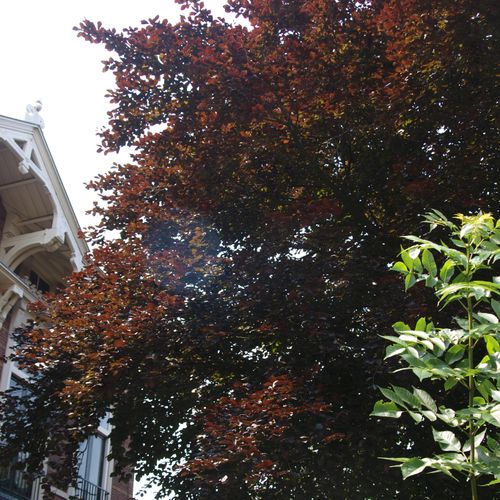
Grey Poplar | Populus × canescens
The leaf of this poplar has a greyish underside, which creates pretty colour effects in the wind.
Grey Poplar | Populus × canescens
The leaf of this poplar has a greyish underside, which creates pretty colour effects in the wind.
The gray poplar is a fast-growing poplar with a particularly characteristic crown and trunk. The trunk is white-grey with black stripes and diamond-shaped grooves. On older specimens, these grooves form patterns into very distinctive eyes on the trunk.
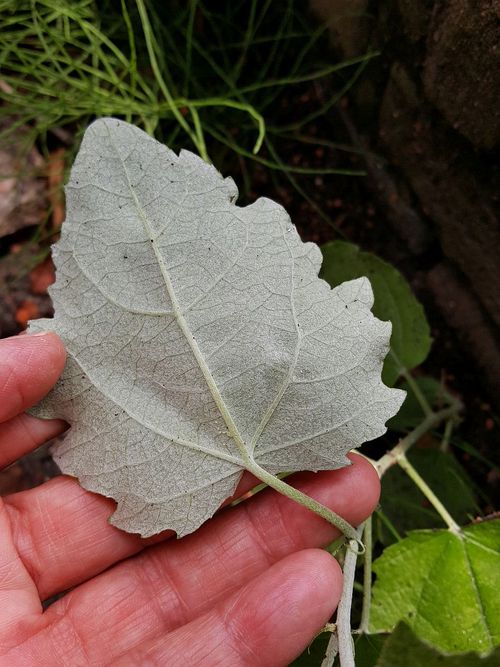
Japanese Ornamental Cherry | Prunus x yedoensis
This Japanese Cherry is considered to be one of the most beautiful flowering cherries. The tree comes from Japan, but the origin of this variety is unclear. It is said to have originated around 1730.
Japanese Ornamental Cherry | Prunus x yedoensis
This Japanese Cherry is considered to be one of the most beautiful flowering cherries. The tree comes from Japan, but the origin of this variety is unclear. It is said to have originated around 1730.
Cherries belong to the rose family, which also includes other trees such as hawthorns, apples and pears. The Japanese ornamental cherry has only ornamental value. The fruits of this tree have hardly any flesh and are sour in taste. It is a medium-sized tree of 6 to 10 meters in height. The crown shape is wide vase-shaped. The tips of the branches hang over, eventually flattening the crown. It blooms profusely in April! The flowers are light pink in bud and white after opening. They smell slightly of almond. The flower diameter is approximately 3.5 cm. In autumn the leaves turn bright yellow.

Katsura tree | Cercidiphyllum japonicum
The leaves of this group of Katsura trees turn a beautiful yellow-orange in autumn.
Katsura tree | Cercidiphyllum japonicum
The leaves of this group of Katsura trees turn a beautiful yellow-orange in autumn.
The katsura tree originates from China and Japan and is sometimes also called caramel tree because of the light caramel scent it emits during leaf fall.
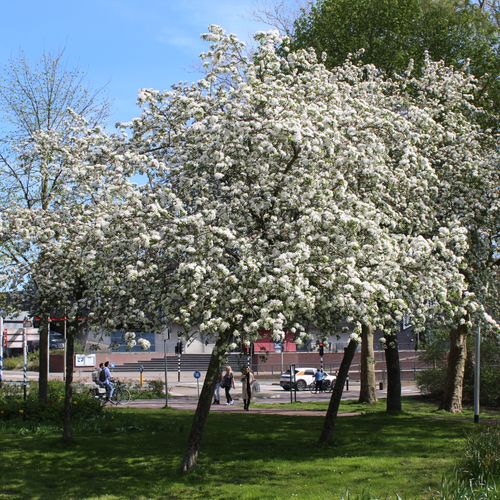
King's Lime | Tilia x europaea `pallida`
On April 26, 2013 this King's Lime was planted on the occasion of the coronation of King Willem Alexander by mayor Don Bijl, alderman Roald Helm and five people from Purmerend, who received a royal decoration on this day.
King's Lime | Tilia x europaea `pallida`
On April 26, 2013 this King's Lime was planted on the occasion of the coronation of King Willem Alexander by mayor Don Bijl, alderman Roald Helm and five people from Purmerend, who received a royal decoration on this day.
Purmerend actually has no tradition when it comes to king trees. We have a Julianalinde (a Dutch lime tree), which is also on this route. In the same year, an elm was also planted on Tramplein on the occasion of Queen Wilhelmina's birthday. Unfortunately, the refurbishment of the square did not survive the tree. Like the Julianaline, this royal lime tree is a Dutch lime tree: a cross between a small-leaved lime tree and a summer lime tree. Because both occur in the wild in the Netherlands, a Dutch lime tree can spontaneously emerge in the forest. However, the crossing you see here originated in a nursery. You see the tree a lot at farms, because it gives a lot of shade. Do you also know the Leilinde? So that is a Dutch linden that is pruned annually in a plane. It is also an easy tree, which actually grows everywhere. As it ages, the trunk gets considerable grooves and thicker knobs on which young twigs often grow.

Hornbeam | Carpinus betulus
To the left of the hill you see a rather extraordinary hornbeam. It can live up to 200 years. If you don't prune it to shape, it can reach a width of up to 10 metres.
Hornbeam | Carpinus betulus
To the left of the hill you see a rather extraordinary hornbeam. It can live up to 200 years. If you don't prune it to shape, it can reach a width of up to 10 metres.
The hornbeam is a member of the birch family. Sometimes it is confused with the common beech for hedges: the fagus. Main difference between these two? The hornbeam is deciduous, with the fagus the withered leaves remain on the plant in winter.

Caucasian Lime | Tilia euchlora
The last tree on the trail is the Caucasian lime. When in bloom, this tree seems to buzz. Its late blooming and strongly fragrant flowers are brimming with nectar and make it a real magnet for insects.
Caucasian Lime | Tilia euchlora
The last tree on the trail is the Caucasian lime. When in bloom, this tree seems to buzz. Its late blooming and strongly fragrant flowers are brimming with nectar and make it a real magnet for insects.
In the period between June and July, the lime tree produces large yellow flowers that smell very nice and can contain a lot of honey. The lime tree is a very easy tree that has few requirements. It can even tolerate prolonged drought! The lime tree can grow up to 20 meters high and 8 meters wide.

